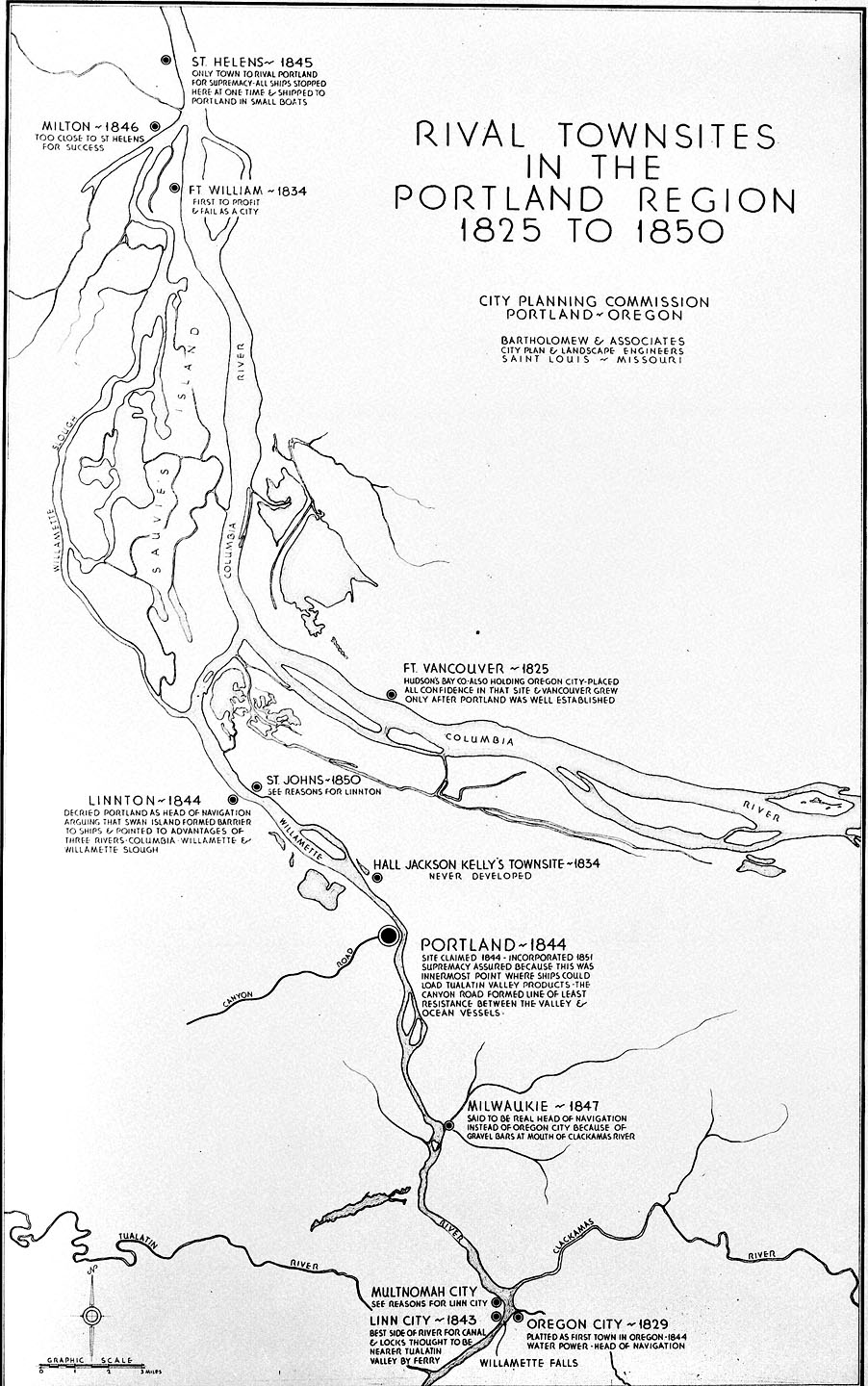Portland’s primacy as the region’s leading port was not assured in the town’s early days. The Hudson’s Bay Company was well established at Fort Vancouver and also at Oregon City. Other towns boasted advantages that Portland lacked, such as easy access to three rivers — counting the Willamette Slough — and no need to navigate around Swan Island. Captain John H. Couch touted Portland as the best deep-water port in the area, and in so doing helped to convince others that the townsite merited investment.
Portland continued to grow after Daniel Lownsdale proposed a plank road connecting Portland to the Tualatin Valley — later Canyon Road. Opened in 1856, the all-weather road connected Portland to the valley farms. While the road was difficult to traverse, it nonetheless served as a connection that benefited both farmers and local merchants by increasing the quantity of wheat available to sell to California.
Portland’s first generation of settlers was primarily merchants, generally more interested in trading farming implements and goods not produced locally to Willamette Valley farmers in exchange for goods that they could ship to California for a profit. Portland promised a bright future as well, because Asian ports were also within reach.
Further Reading:
MacColl, E. Kimbark. Merchants, Money and Power: The Portland Establishment 1843-1913. Portland, Oreg., 1988.
Snyder, Eugene E. Early Portland: Stump-Town Triumphant: Rival Townsites on the Willamette, 1831-1854. Portland, Oreg., 1970.
Written by Trude Flores, Sarah Griffith, © Oregon Historical Society, 2002.
